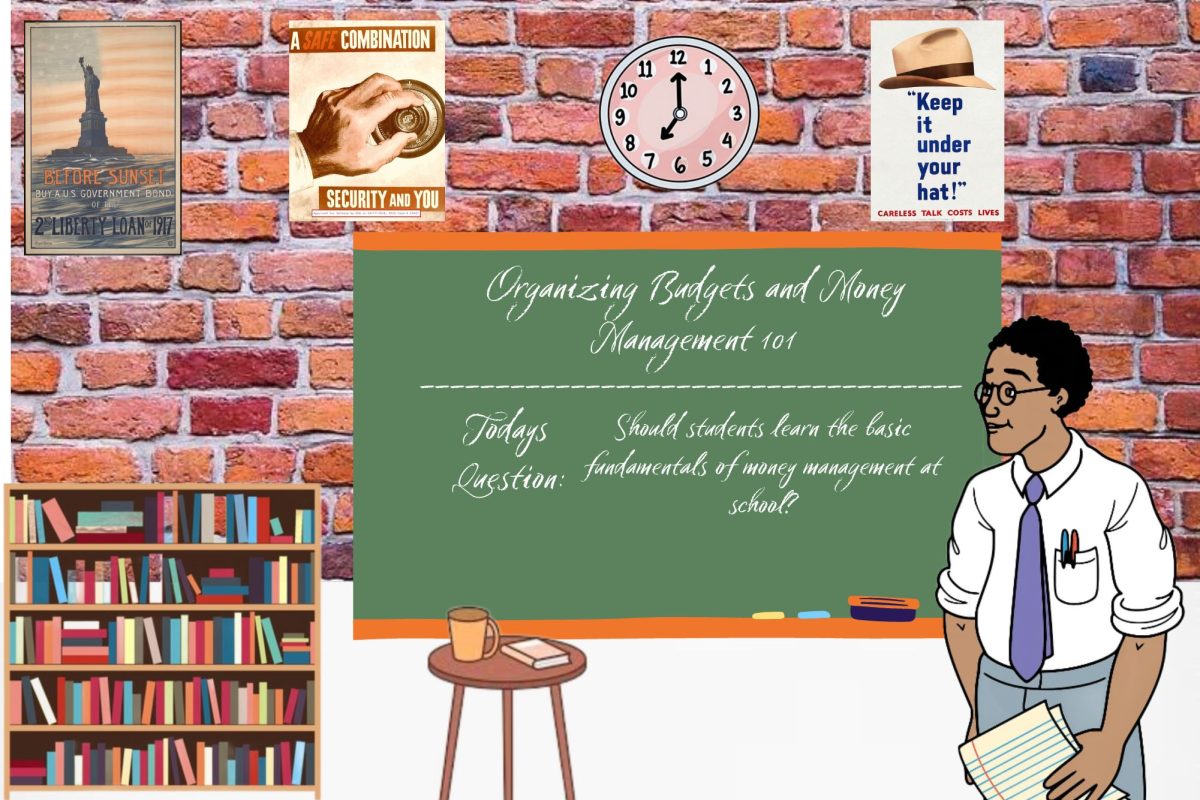As teenagers transition into adulthood, the importance of managing finances becomes increasingly evident. Rising inflation rates and increasing college prices underscore the imperative for high school students to cultivate strong financial skills. Although some feel that education in fiscal policy and management is a private matter, financial literacy should be a requirement for high school graduation. A high school should prepare students for the workload associated with different careers, but it does not always prepare them to manage a career’s financial benefits or restraints.
To champion equity in education, it is imperative for schools to offer comprehensive financial education resources accessible to all students, particularly for those from low-income families. According to an NBC article, low-income families exhibit a significantly elevated debt-to-asset ratio. Consequently, students from these families may face difficulty in alleviating financial burdens and visualizing their future accordingly. Implementing a school program is crucial in promoting a more sustainable approach to managing personal finances, ensuring that students only borrow amounts that are realistically manageable to repay.
Moreover, the exorbitant rise in the cost of attending a four-year university over the last two decades coincides with a surge in applications from low-income students. It is essential that a student’s access to education is not hindered by their parents’ financial status but is instead determined by their academic achievements. Research from the National Center for Education Statistics underscores that a student’s likelihood of applying to college is influenced by their perception of their family’s financial capacity to afford it. Regrettably, qualified students from impoverished backgrounds may forego pursuing their preferred academic paths simply because they fail to tap into available financial aid resources. The establishment of a high school financial literacy program becomes pivotal in empowering underprivileged students to leverage financial aid effectively, transforming the dream of attending a university into a realistic and attainable option.
Financial literacy classes may potentially consume some of the time that students allocate to other subjects. However, this trade-off can be viewed as a strategic investment in a student’s ability to discern and prioritize their academic interests. While it is essential to approach all school subjects with an open mind, students aspiring to pursue specific careers may find it unnecessary to engage in classes unrelated to their chosen field. For instance, a student with a keen interest in computer science may not find it imperative to enroll in advanced humanities courses to excel as a programmer. Instead, they could derive greater benefits from acquiring skills related to budgeting and financial management during their college years. This shift in focus allows students to develop a practical understanding of structuring their finances, which can prove invaluable in their life after high school.
By assessing their financial status and priorities, students may start considering their careers as more than just a means to obtain a college degree. This shift in perspective encourages a proactive approach to career planning, prompting students to align their educational choices with their long-term goals rather than merely pursuing academic milestones. In essence, integrating financial literacy into the curriculum empowers students to make informed decisions about their education and future endeavors.
Ultimately, requiring financial literacy classes for high school graduation is not only an imperative step toward fostering a generation of financially savvy individuals, but also an investment in the long-term economic well-being of students. Armed with the tools to make sound financial decisions, students would be empowered to successfully navigate the challenges of academic expenses and embark on their professional journeys with confidence.











